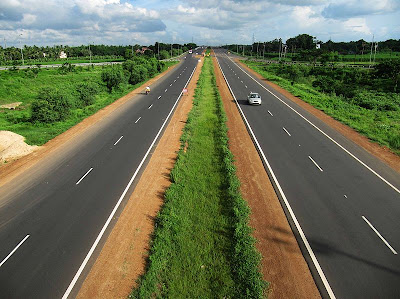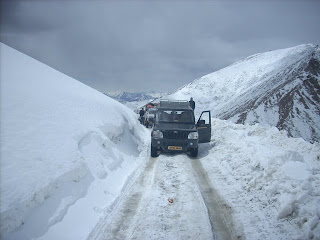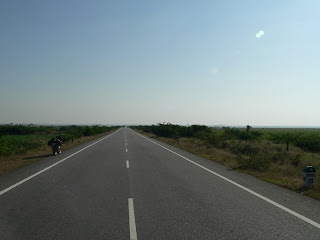He stands out from the regular pack of travelers who travel on packaged deals to prominent tourist spots. He mingles-not with tourist masses but rather that he jingles with the locals. While most others set off on cozy holidays, he depends on his shoes, strings and their budget! While they take guided tours, he takes the road less traveled. All hail the Backpacker as he changes your definition of a true vacation.
With a growing need to stretch the buck, travelers are getting more and more creative at exploring new travel dimensions and at extracting the maximum out of a minimalistic holiday.
Backpacking is a state of mind. You certainly have to shed your extravagant ways to find out if you enjoy this new phenomenon. And believe me…. it got its own rugged charm! The essence of backpacking is to get as close to the action as possible – be it the local culture, sightseeing or discovery of newer aspects of the place –while sticking to the least possible budget. So seeking newer economical ways and means to doing so in itself is a thrilling experience. At the end of it all, I’m sure you don’t mind the bank-balance that remains. Ofcourse, this could be difficult to do with kids who would require their personal space during the trips and let’s not forget the other travelers who need their personal space from your kids – especially if you opt for the dormitory accommodation.
Whether it’s another cosmopolitan city that you’re visiting or trekking through dense and rugged jungle terrain or scaling up a 14,000-foot snowy mountain, a backpack can be your soul-mate – holding all your ‘inevitables’ on the trip. Here are a few tips for the backpacking wannabies – straight from the seasoned and the newbies:
1. Research about the place that you’re backpacking to. The season; the weather; the landscape; the type of accommodation; the food culture and the duration of the trip will all determine what and how much you need to pack for this trip. You could also rent camping or trekking or rafting gear from the Tourism Departments or private tour operators which would drastically reduce your backpack load. For instance:
a. Mountain-trekking would demand that you carry winter-wear in all seasons plus canned food and camping tents and mattresses as none of these are available on the mountains.
b. Nature-treks in the jungles in tropical forests which are seen mostly on the Western Ghats demand that you wear socks daily per day of trek as these forests have leeches which manage to crawl into the trekkers’shoes. Socks are to be worn and the pants to be tucked into the socks in order to prevent leeches from getting onto the skin.
c. Decide ahead as to the type of the trip – whether plain leisurely or touristy. I cannot emphasize this enough. Read up travel-blogs online to see how many backpackers regret not planning ahead and leaving behind their professional cameras with tripod; or night-vision binoculars or GPS, assuming they wouldn’t need them and then regretting this decision upon reaching the destination.
d. What you carry in your backpack would be determined by the destination you choose. Click these links for destination-specific backpacking:
2. Do not compromise on the quality of backpacks or haversacks or your travel experience would get compromised. Especially when you go to remote places such as mountains and national parks where you can’t get an immediate alternative, you can’t afford your backpack giving way to sub-standard. Like a seasoned backpacker would say “you’re only as good as your backpack!”.
3. Packing a backpack is not just an art; it’s also a science these days. Distribute load evenly while packing and refrain from overloading with ‘not-imperative-for-the-trip-items’as you need max space for the ‘must-haves’. While medical associations have mapped the weight of the backpack in accordance to the weight of the person carrying it, maybe you cannot be so precise so avoid the unrequired stuff. One of the important chapters in the Mountaineering Course held at the base camp of the Himalayas is training in load-carrying of backpacks on the mountains. There is a reason why training in load-carrying is emphasized. With exception of few places, you have to carry your own backpacks throughout your trip so your shoulder, neck and knees better be up for it. Infact, the Himalaya Institute of Mountaineering in Darjeeling mandates one month of running and strength-training prior to enrolling in the course of mountaineering. And you should see some of the stuff they make you carry!
Travel-guides, medicines, sunblock, water, camera, umbrella and such must go into the outer pockets while the clothes and the likes go into the main compartment of the backpack.
4. Do not confuse ‘backpacking’with ‘flashpacking’. The difference between the both is that flashpackers are not budget-conscious.
5. Smart accommodation is equal to smart savings. Internet, local tourism departments and friends who’ve been there are your best sources of information on accommodation options such as tourist lodges that are alternate to the regular hotel stays. So be aware that in some places which are extremely remote, hotel and tourist lodges and cottages cost the same. Explore the homestay option with the locals which is cheaper than the rest. Opt for stay and dine option instead of buying food in restaurant which would increase your budget. Refill your water bottle at the place of stay.
6. Local travel must be mostly on foot or by bus whether it is in Kalimpong orKolkata. Taxis eat up your money without your knowledge. For a quick tour of the place, opt for the State Tourism Department’s guided tours. For specific destinations, ask your own hotel for their travel options as some provide minivans or sumo at nominal charge. In hill stations, choose pony-rides which would cost lesser than taxis as they take longer to reach. In this case you will need to factor-in more time for travel.
7. Here are popular backpacking destinations of India:
p. Simen Chapori
u. Dibru-Saikhowa National Park
8. Caution:
a. Do not venture off into the wilderness alone. Professional guides are provided by the local tourism departments and private tour operators. Else, request or hire a local to take you around in the forest or on the mountain.
b. Inform of your backpacking expedition to atleast 5 different people who should send out a search-party or rescue-team should you not return on time.
c. Carry the contact information of the local tourism department, local police department, your hotel or lodge, your folks back home –all written down or printed. Also exchange phone numbers of your co-backpackers if you’re going in a group. Most backpacking places would have no cell phone network so you need to keep your folks informed of that.
d. Carry your medicines and your physician-prescribed tabs for unforeseen circumstances as well. Click here for details. Your own first-aid kit is a must. If you are a diabetic, do consult your physician before your trip. Depending on your trip prepare amply to treat nausea, sea-sickness and altitude-sickness. Read the links above for pointers.
e. You must carry 5 photocopies of your ID & residence proof plus your passport-sized photos in your backpack as they would be required to be submitted at several checkpoints especially in the northeast states of India. Take photocopies of all your credit cards and debit cards and leave one set of all your documents at home with a family member. Foreigners need to keep handy their passport photocopies and passport-size photos for submission at the various checkpoints.
f. Credit cards would not work on most backpacking circuits. Carry enough cash to last the whole trip. As for foreigners, exchange your money in big places while you can.
g. Keep your camera loaded and handy and do carry extra batteries.
h. Learn to use the GPS and the compass. They certainly would come handy on backpacking tours.
i. Load your mobile phone with all your favourite music or pack your Ipod.
j. Walking shoes are of paramount importance. But do not wear brand new shoes. Always wear pre-worn shoes while touring places. You don’t need shoe-bites to slow you down.








